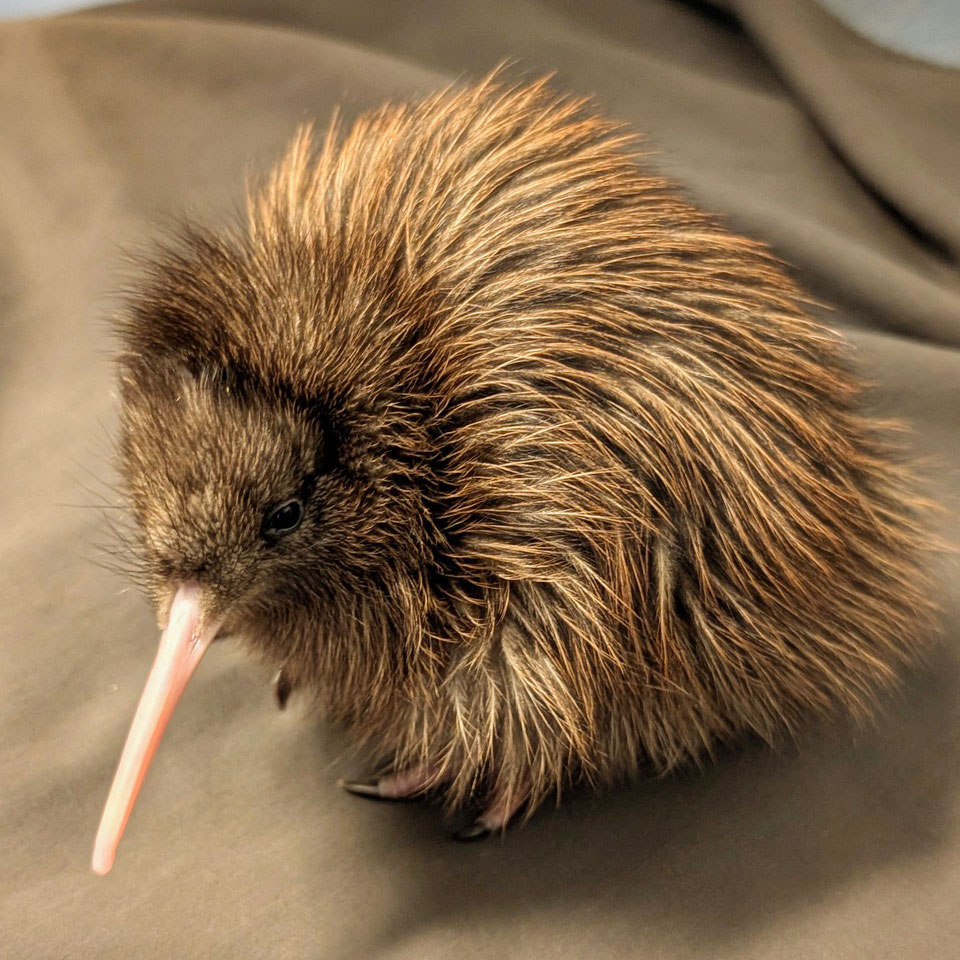A heartwarming milestone for conservation — meet Cesi, the first Haast tokoeka chick of the 2025 season, hatched at the West Coast Wildlife Centre in Franz Josef Glacier.
The West Coast Wildlife Centre in Franz Josef Glacier is celebrating a very special arrival — the first Haast tokoeka kiwi chick of the season has successfully hatched after a remarkable incubation journey.
Affectionately named Cesi (after an Italian town as part of a special sponsorship), the chick hatched naturally in the early hours between 1:30 and 3:00 AM on 18 October 2025, marking another critical step in the ongoing efforts to protect and grow the population of this threatened species.
Cesi’s journey began when the egg arrived on 24 September 2025, weighing 337.2 grams and estimated to be 57 days old. The egg was carefully placed in the Centre’s specialised incubation facility, where it spent 22.5 days in the incubator before finally hatching. This was a long hatch, taking six days from internal pip to hatch, but the result was perfect: a strong, healthy chick weighing 260.7 grams at hatch.

“Every hatch is a moment of absolute joy for our team,” says Devon Collins, Wildlife Manager at the West Coast Wildlife Centre. “The Haast tokoeka is the rarest kiwi taxa on the planet — so welcoming Cesi into the world is something truly special.”
Haast tokoeka are found only in a small area of South Westland, with an estimated wild population of approximately 500 birds. Te Rūnanga o Makaawhio holds collective mana whenua status over the area where the main population of Haast tokoeka live — a connection that reflects the deep cultural and ecological significance of this precious taonga (treasure).
The Department of Conservation (DOC) actively manages the Haast tokoeka population, running landscape-scale predator control operations to reduce stoat numbers. Stoats are the main predators of Haast tokoeka chicks in the wild.
Operation Nest Egg (ONE) has been one of the essential techniques in bringing the Haast tokoeka population back from the brink of extinction. DOC manages ONE alongside key partners. Eggs are lifted from nests in the forest to protect the chicks from stoats and are hatched safely at the West Coast Wildlife Centre and Willowbank Wildlife Reserve. Before chicks reach a size where they can fend off predators, they are transferred to Orokonui Ecosanctuary near Dunedin, or predator-free islands, to grow before being released back into the wild — giving them the best possible chance of survival.
“We’re incredibly proud of the work being done here in Franz Josef Glacier,” says Richard Benton, Director of the West Coast Wildlife Centre. “Each chick gives this special species a stronger chance of survival. Cesi’s hatch is a milestone moment for our dedicated team and our conservation efforts.”
The West Coast Wildlife Centre is home to one of New Zealand’s incubation and hatching facilities for Haast tokoeka. Since opening, the Centre has helped bring kiwi chicks into the world, being a part of Aotearoa New Zealand’s most inspiring kiwi conservation success stories. Visitors can learn more about these rare birds, penguins, tuatara, and the behind-the-scenes conservation work by visiting the Centre in Franz Josef Glacier.
:format(webp))
:quality(90):format(avif))
:format(avif))
:format(avif))